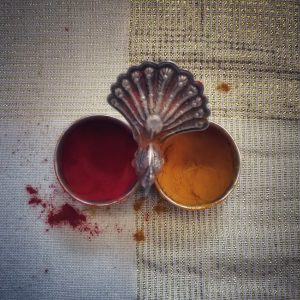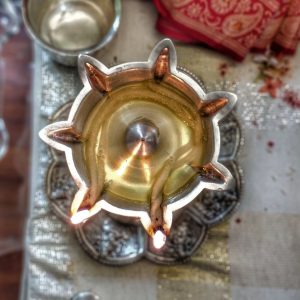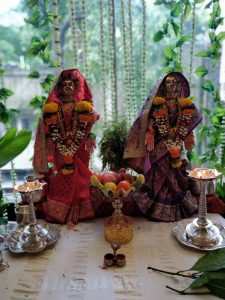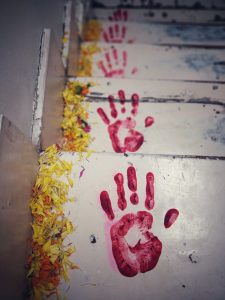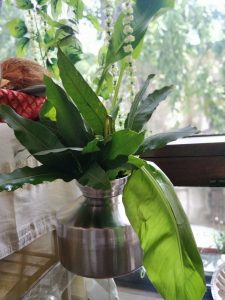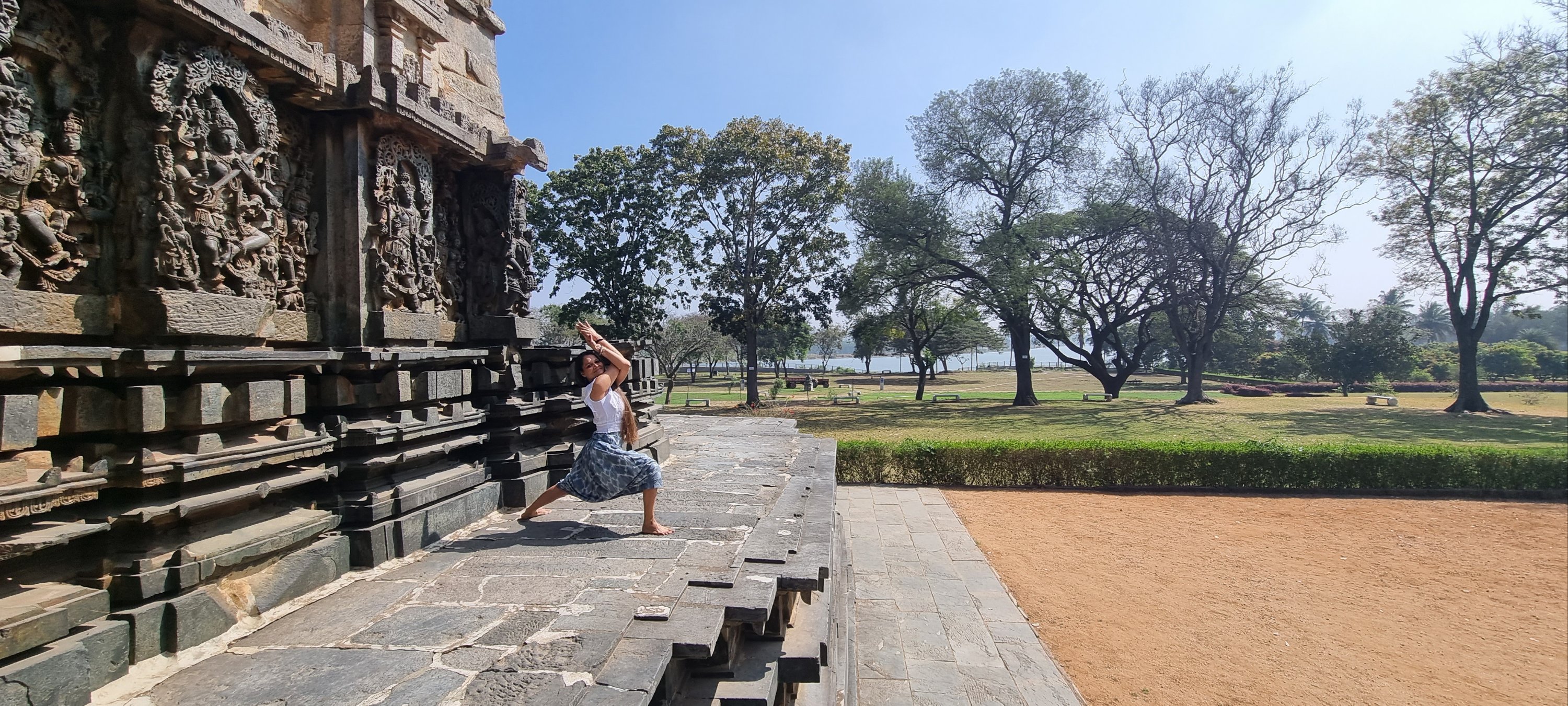
Virbhadrasana with Garudasana arms on the jagati of the Halebidu temple.
It’s impossible to quantify or even qualify the impact of the divine feminine on our lives. The blurb for ‘In the Womb of the Goddess’ begins with: In our culture, we honour the feminine energy with music and with dance, with poetry and with song. It all started in the Womb of the Goddess.
This past weekend I had the opportunity to observe the feminine energy, symbolism and reverence depicted in the temples of Belur and Halebidu. Those of you who follow me on Instagram might have seen a few of these highlights already. I’m adding a lot more here.
Narasimha and the Intestines
Carvings of Narasimha are everywhere. Many in which he’s tearing Hiranyakshipu’s intestines out. What he does with those intestines differ depending on your source. Some say he wore them like a garland, others (like my guidebook) say he ate them.
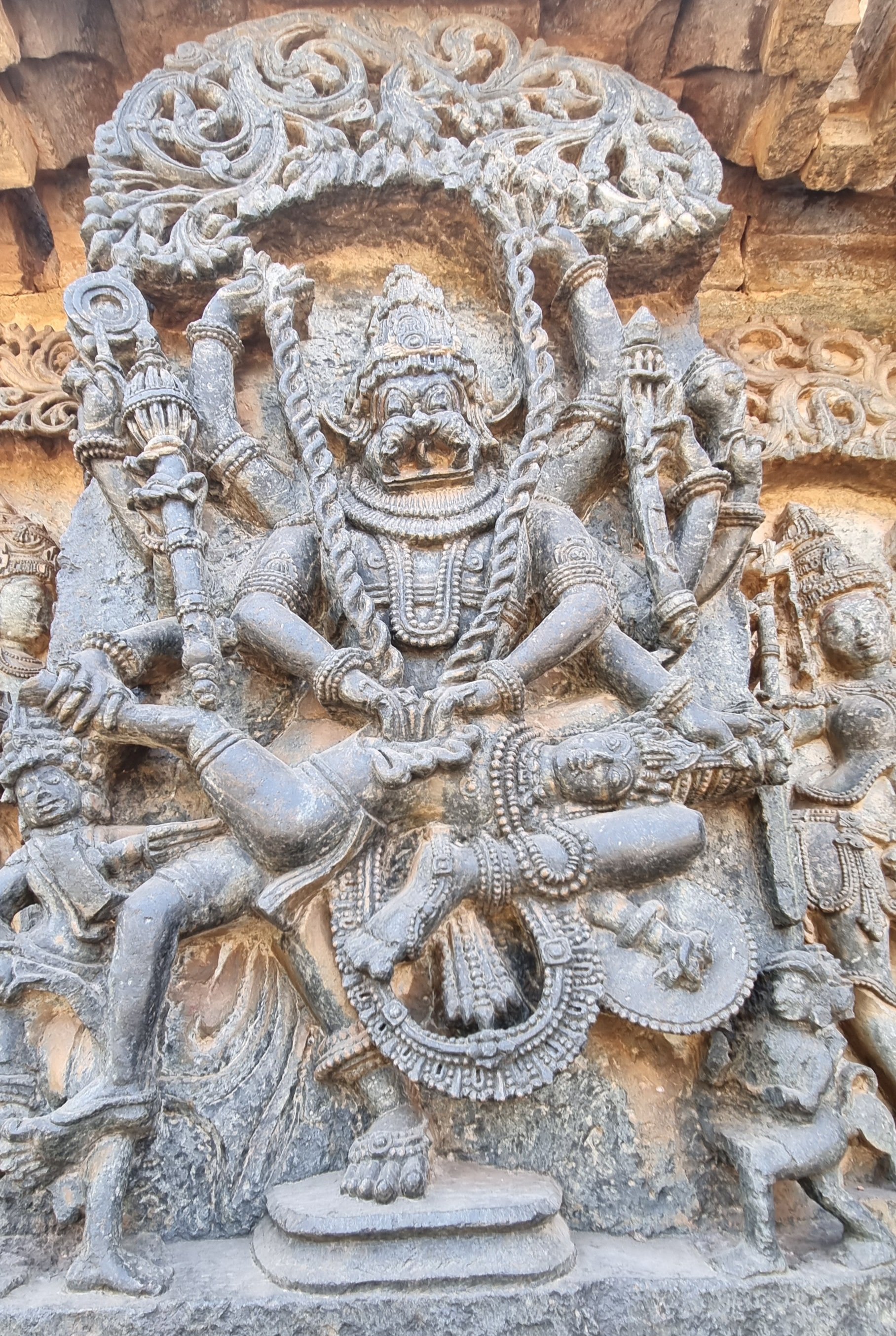
Note the attention to detail in the jewellery. It actually looks like Hiranyakshipu’s necklace is draped over Narasimha’s leg. Also the facial expressions are uncanny – it actually appears he’s dead!
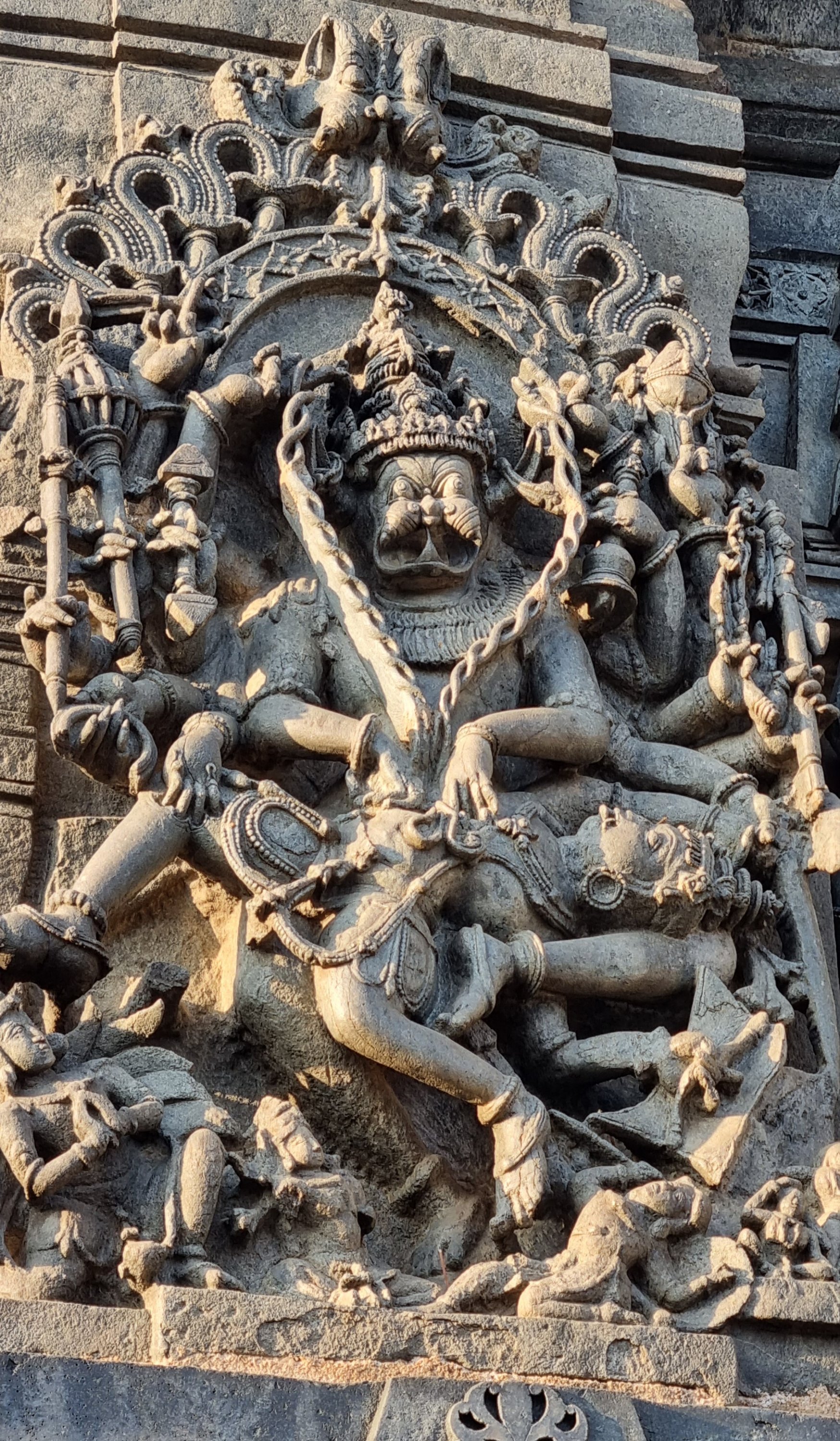
Here we see a lot more of Hiranyakshipu’s jewellery – like his waist belt and his earrings. Note the expression on his face – he’s looking at Narasimha with unadulterated fear.
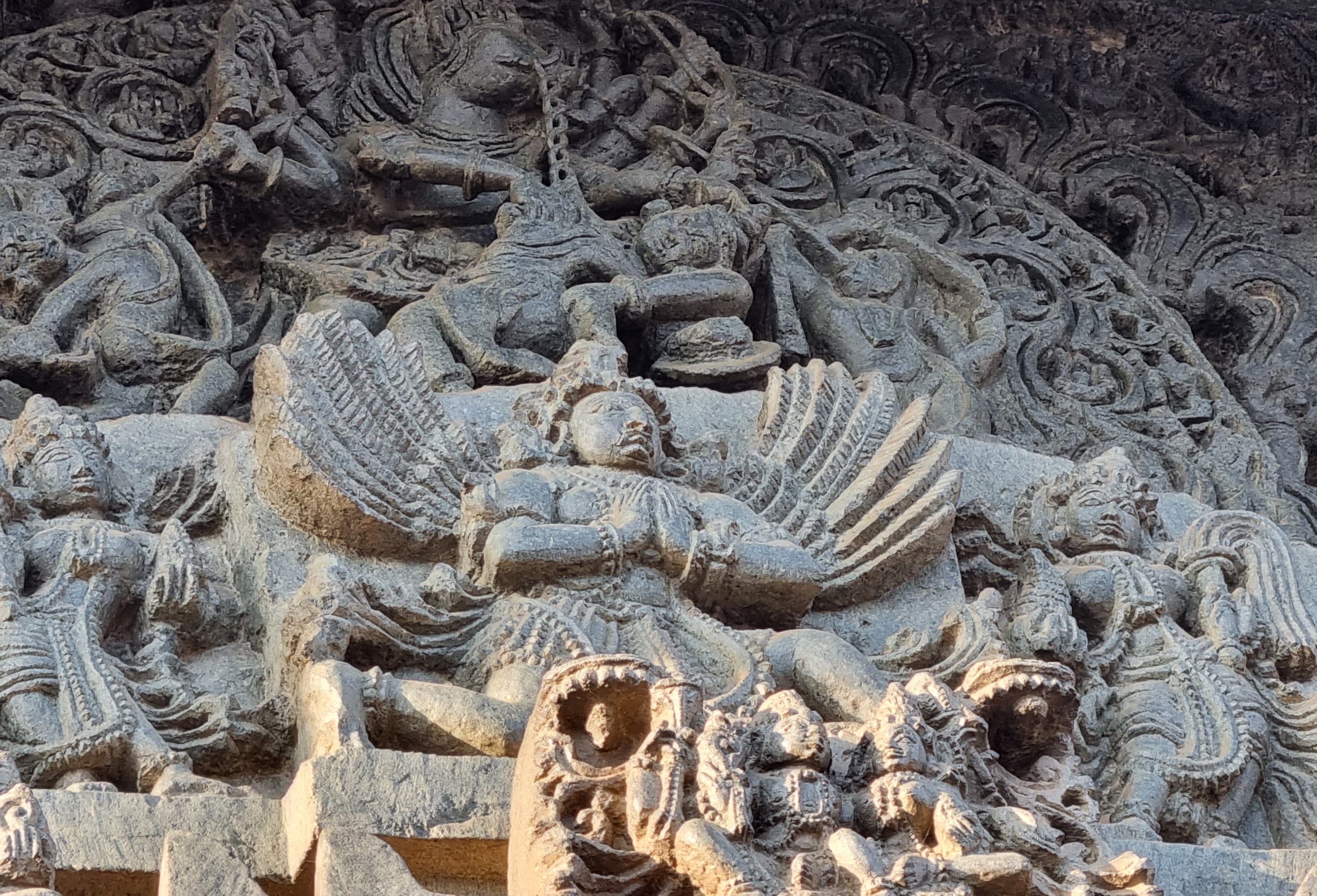
In this carving you can see Garuda under Narasimha. Here the intestines aren’t draped around the neck – in fact there’s only one strand which seems to be going into Narasimha’s mouth. This sculpture also inspired my Garudasana arms with Virbhadra legs – you can see Garuda has his legs in Virbhadrasana.
Trivikramasana
Vishnu is also known as Trivikrama – He of The Three Strides. This avatar is mentioned in a story in the Rig Veda, where Vishnu measures out the three worlds. He took three giant strides for the Earth, the heavens and the space between them. This sculpture shows him with his leg raised – presumably mid-stride.
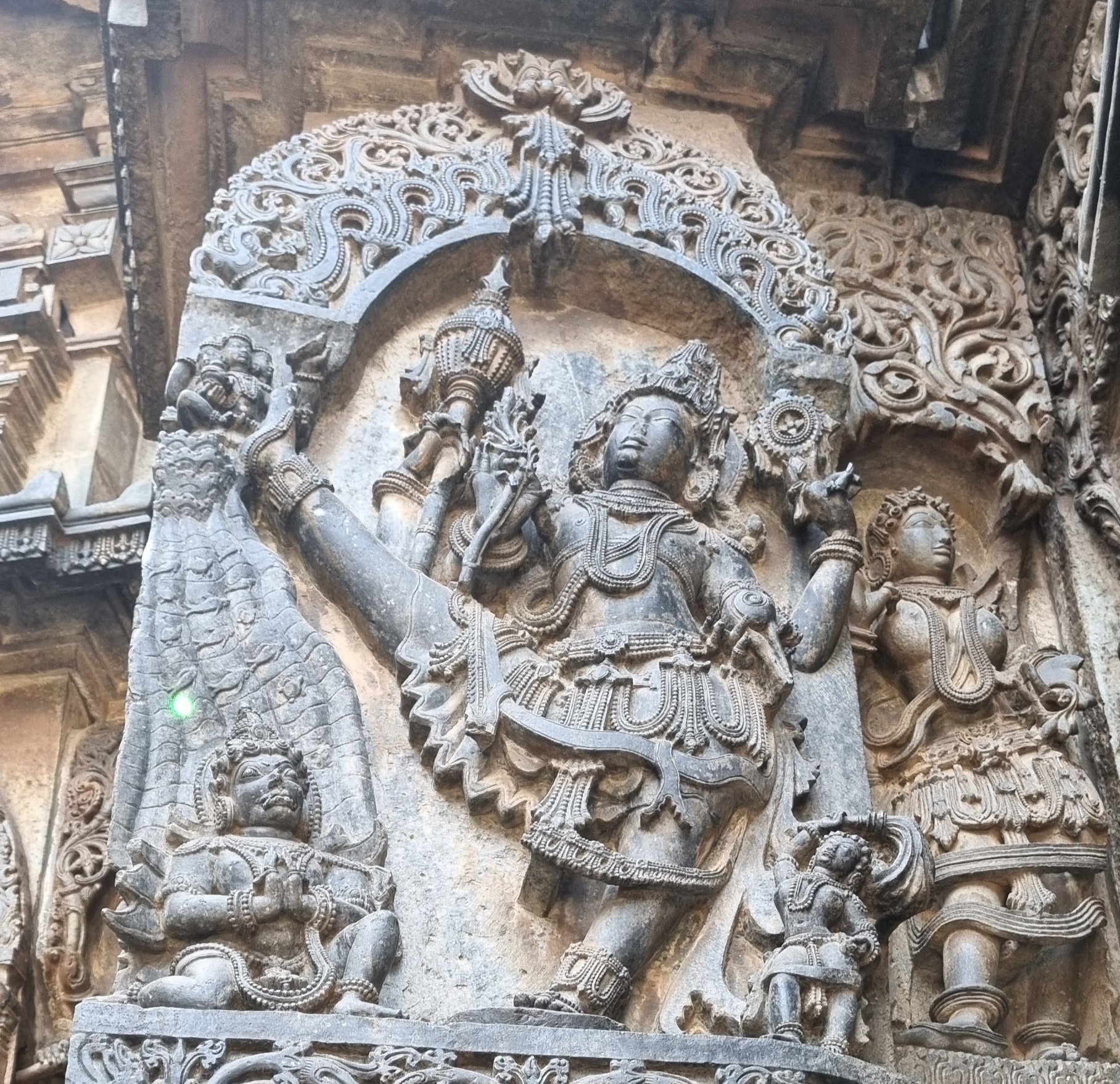
Here we see a different story. Here Vishnu is in his avatar as Vamana. Vamana comes to earth to overthrow the demon Bali – who has gained control over Earth after defeating Indra. Bali is devout and conducts lots of rituals and pujas. Vamana attends on of these and asks Bali to grant him three feet of land to conduct his own puja. Bali agrees and Vamana grows into a giant. His first step is on Earth, the other on the Heavens and his final step is on Bali – with which he pushes Bali down into the netherworld. And order is restored to Earth once again.
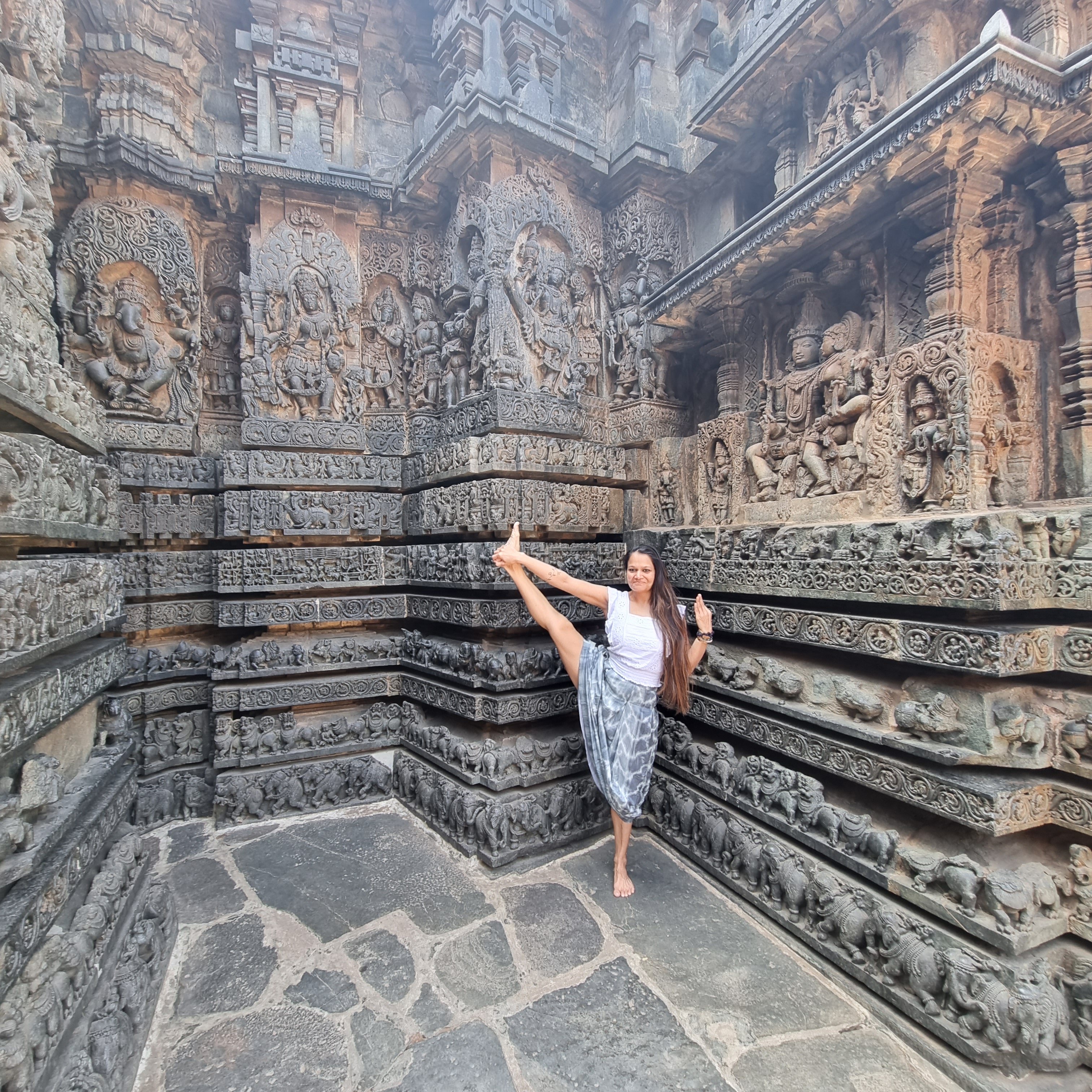
Symbolism in Trivikramasana – are the steps we take bringing order into to our worlds or are we busy running haywire?
Noteworthy Sculptures
Last year I visited the Sun Temple in Konark and was struck by the explicit carvings depicting the Kamasutra. I spotted a few of those in the temples at Belur and Halebidu too, but this section is for carvings I found more noteworthy.
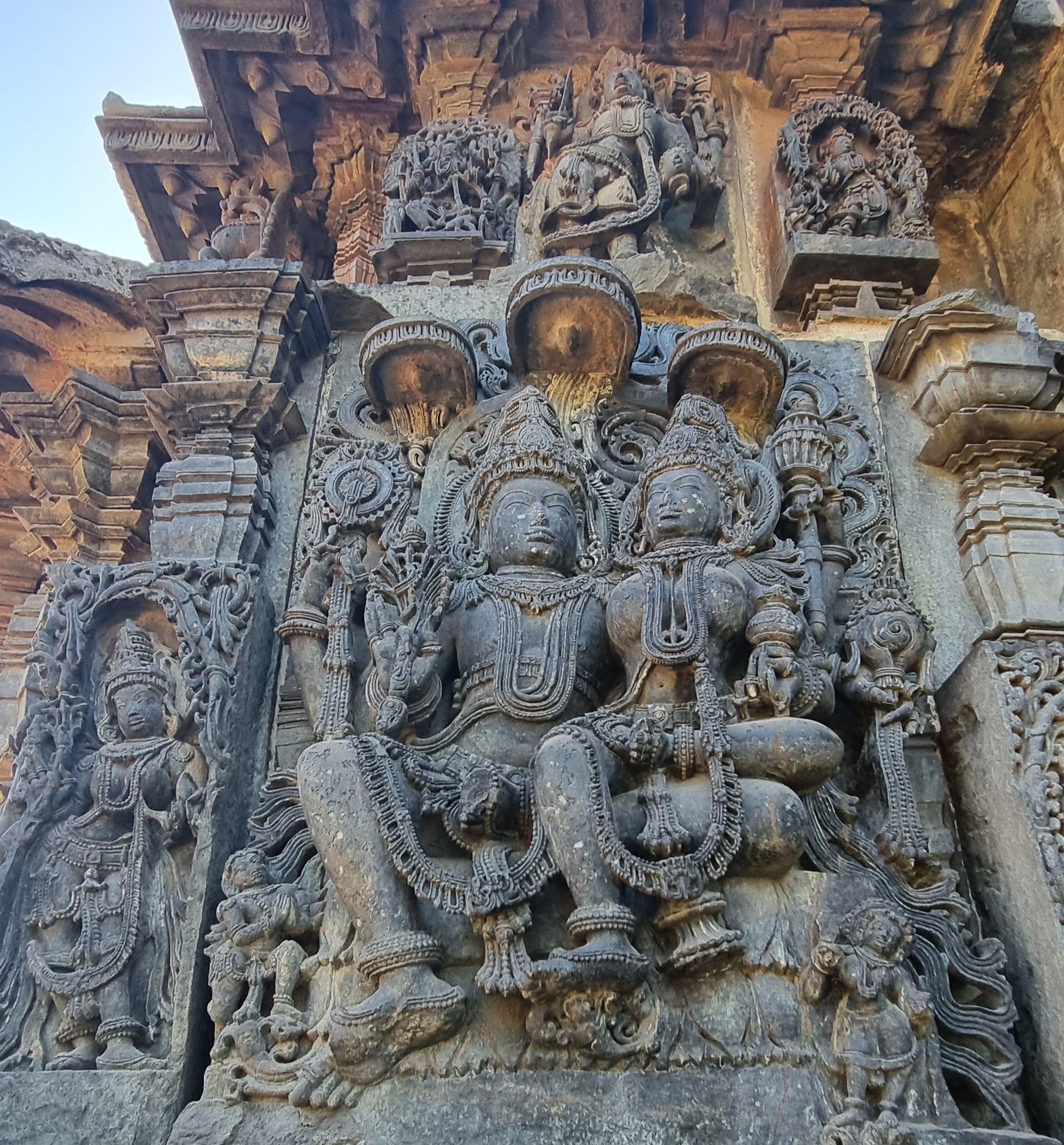
Zoom in and take a look at the ornate jewellery. You can almost feel the weight of the long necklaces. Also the majestic postures – they are upright, but comfortable. Straight without being rigid. The way we’re supposed to be in our yogasanas.
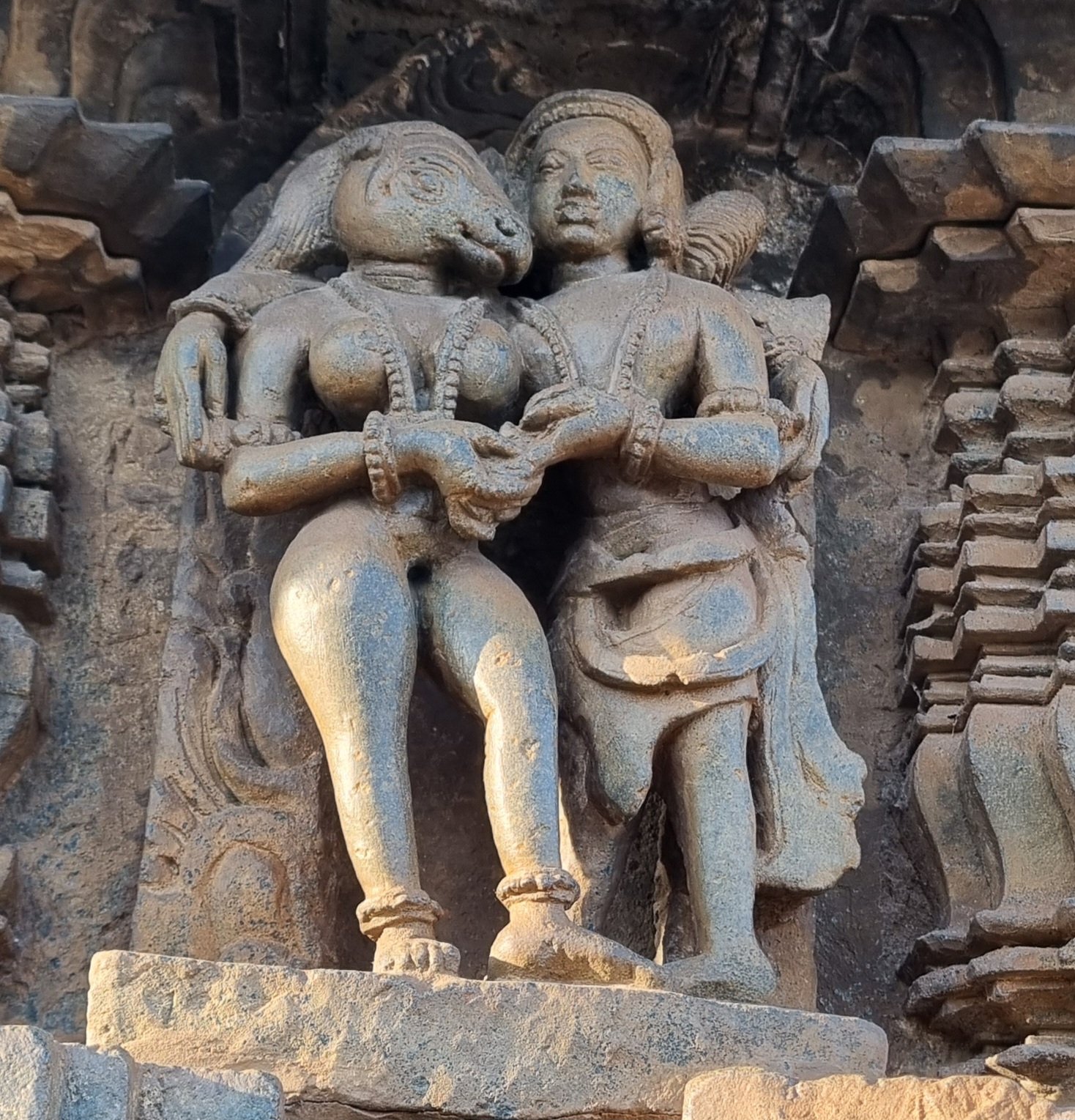
My guidebook actually said this sculpture shows us that love is blind. The man is in love with a woman with an animal’s head. According to the author this is a depiction of young love. I think we can come up with better interpretations.
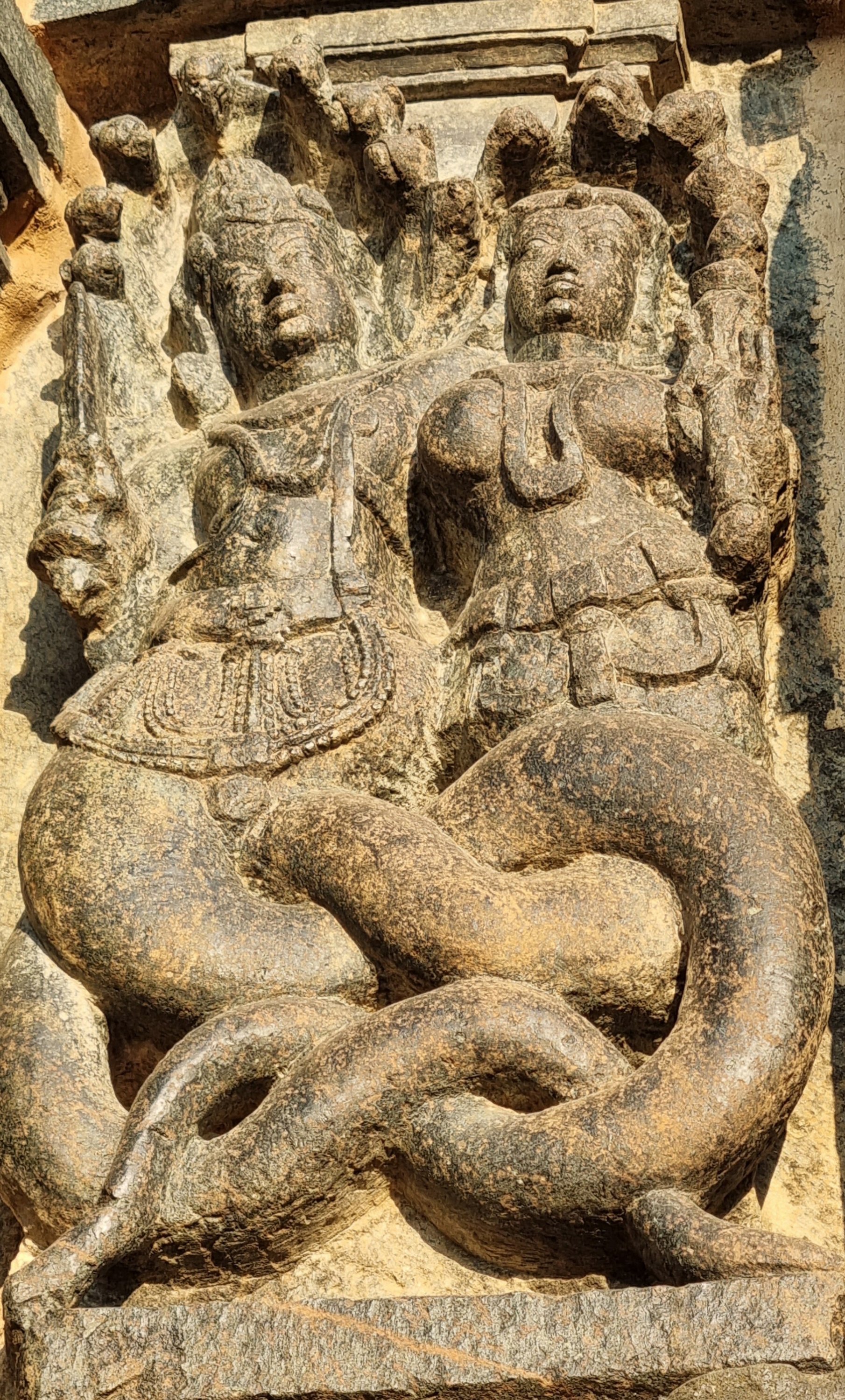
Naga couple – divine or semi-divine beings with bodies that are half snake half human. Typical motifs in Hoysala architecture.
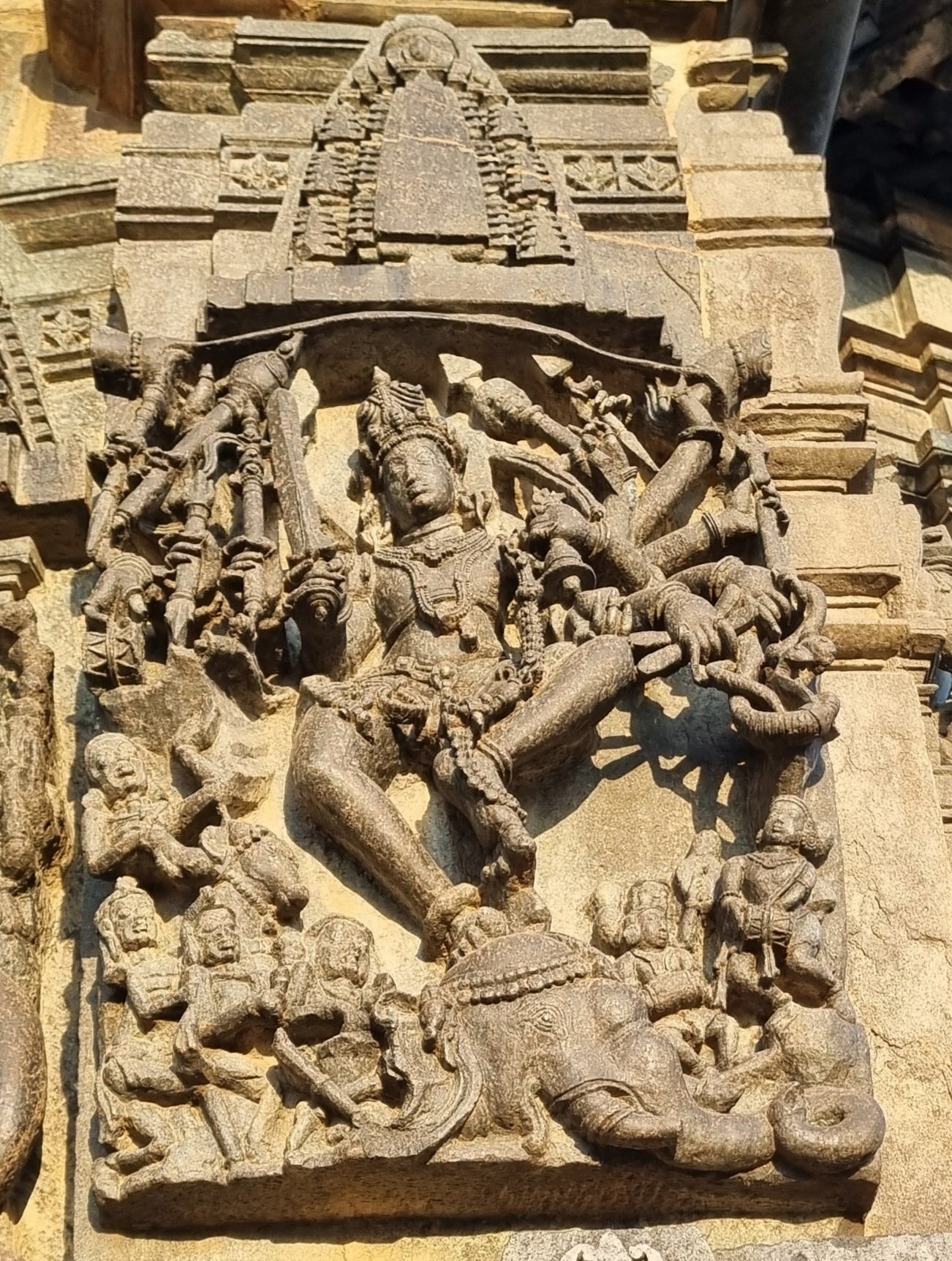
Kill an elephant and then dance on its head – some of the sculptures are quite gory.
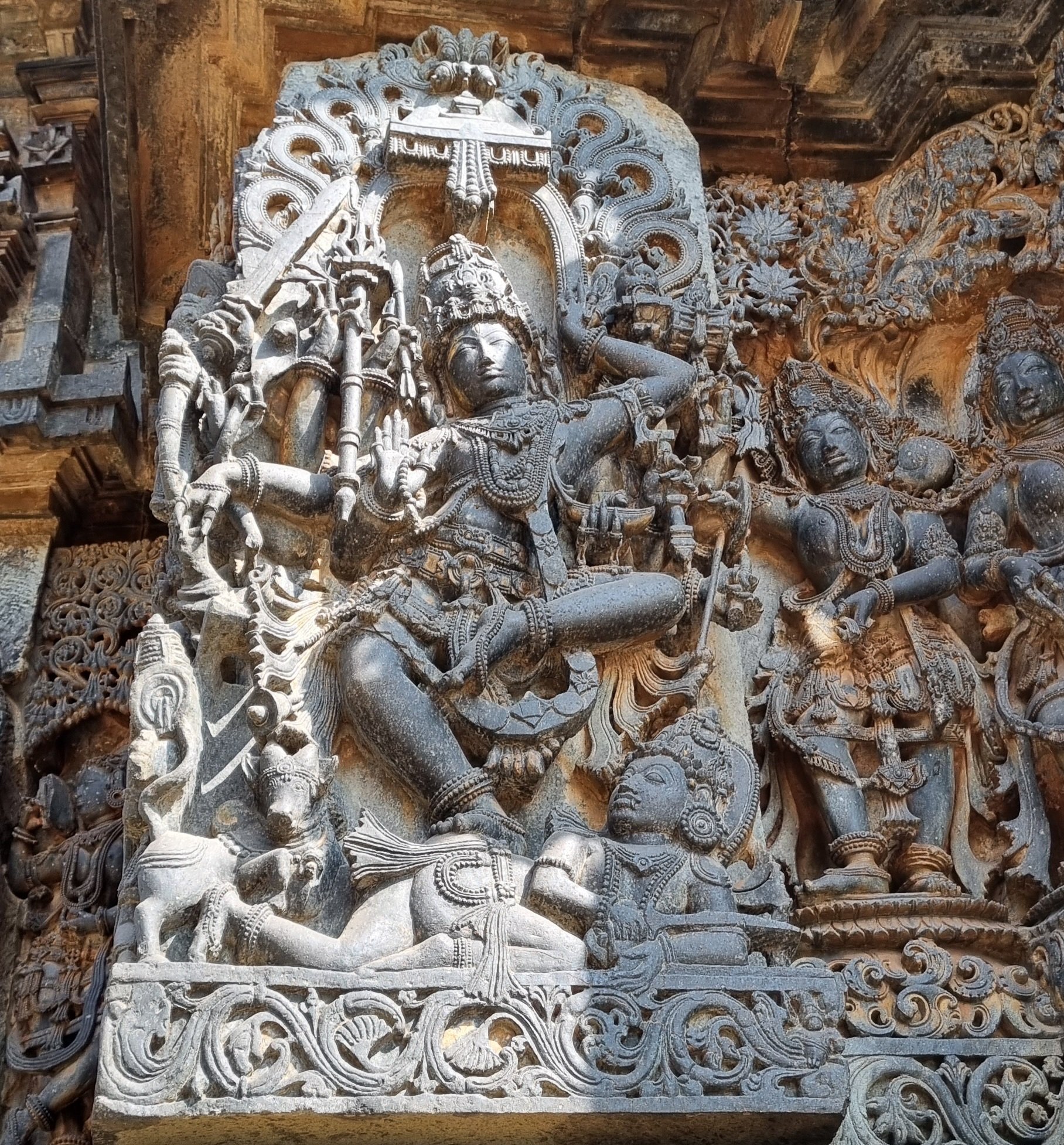
Vishnu pushing Bali into the netherworld. I love the details of the beads in the hand.
Ganesh Sculptures
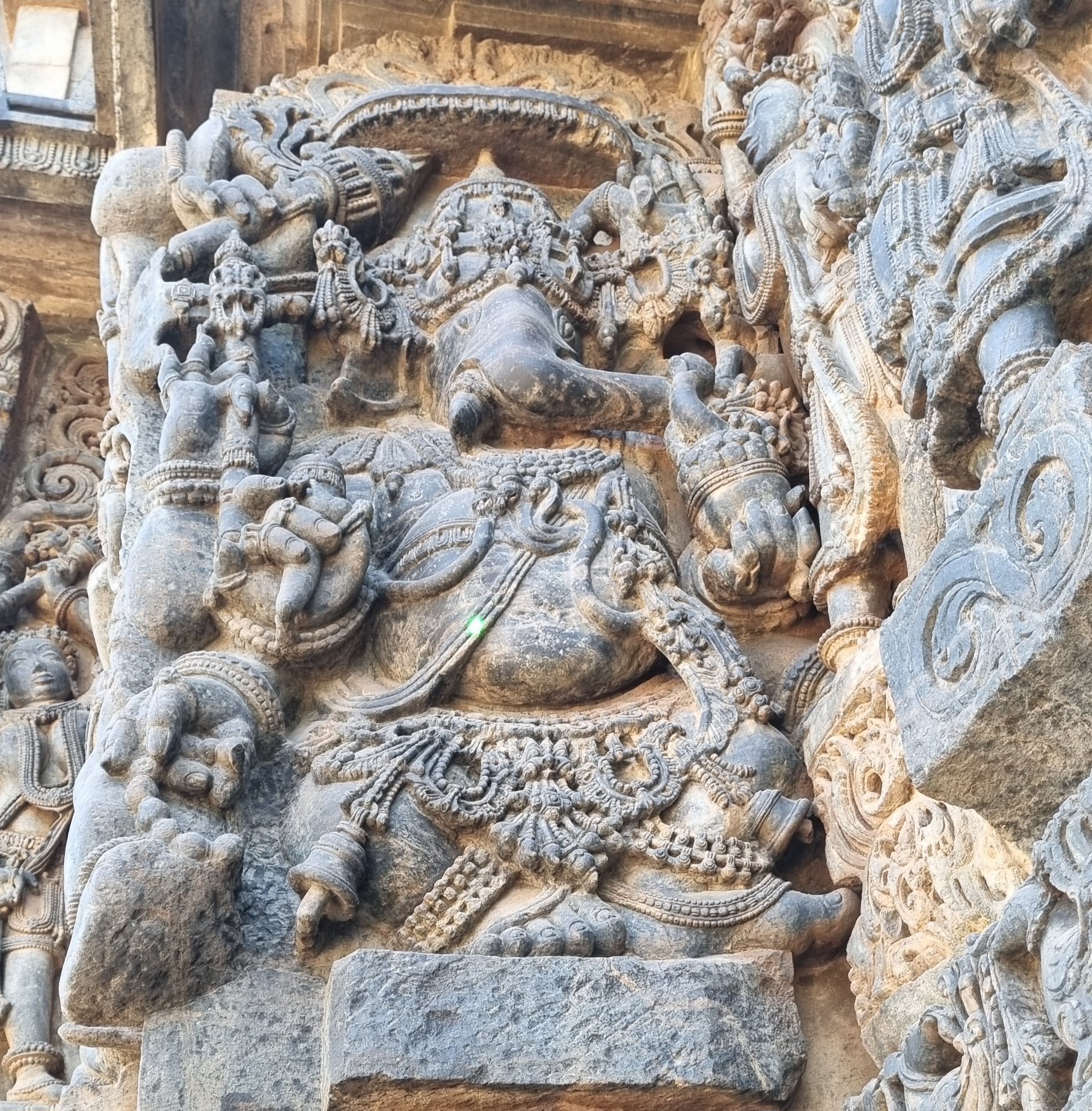
A sculpture on the outside of the Halebidu temple. It depicts Ganesh wearing ornate jewellery. I like the prayer beads in his right hand – and you can see the attention given to the fingers.
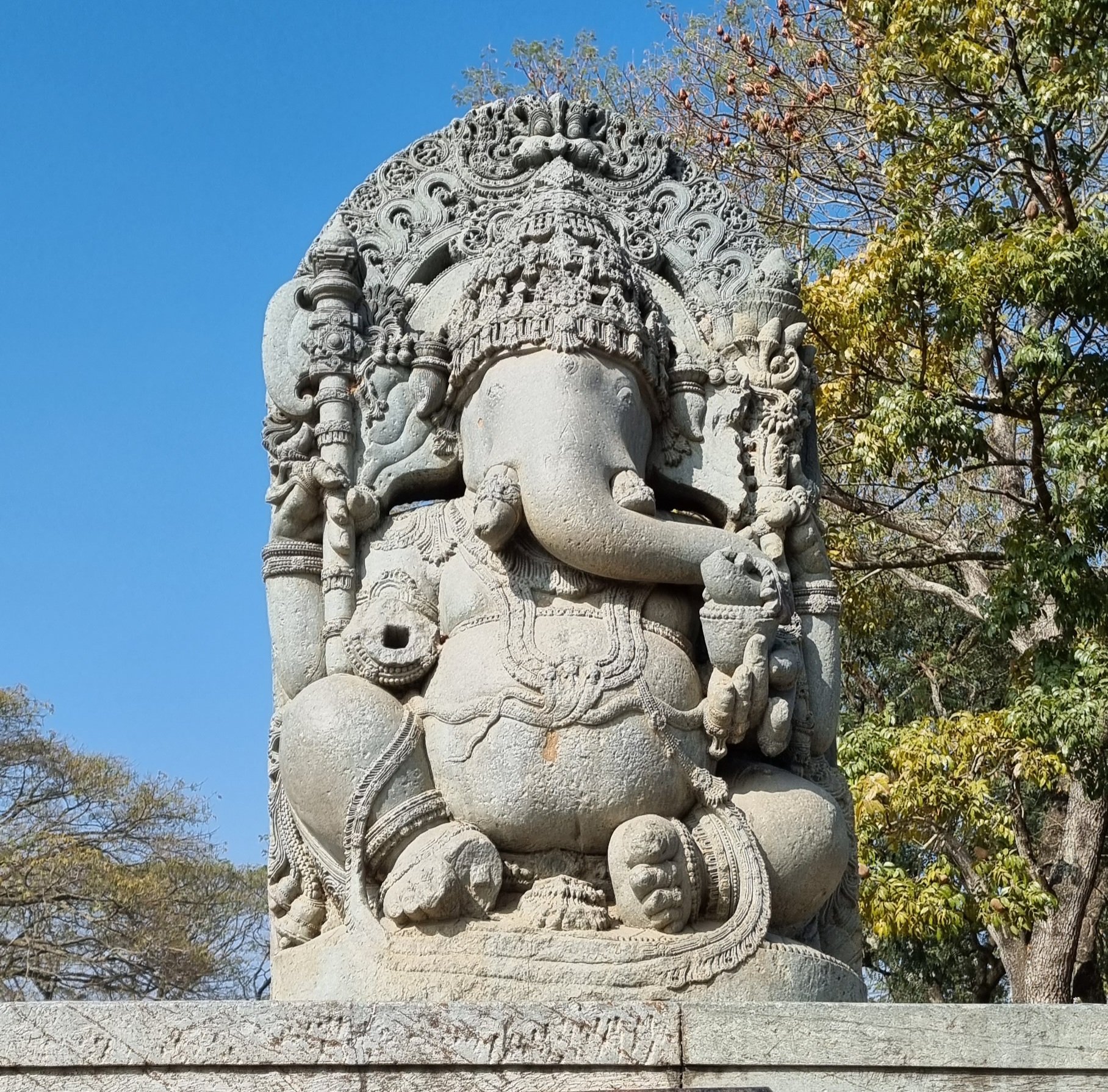
This sculpture is at the entrance of the temple. Temple goers first get his darshan and then move on to the sanctum sanctorum.
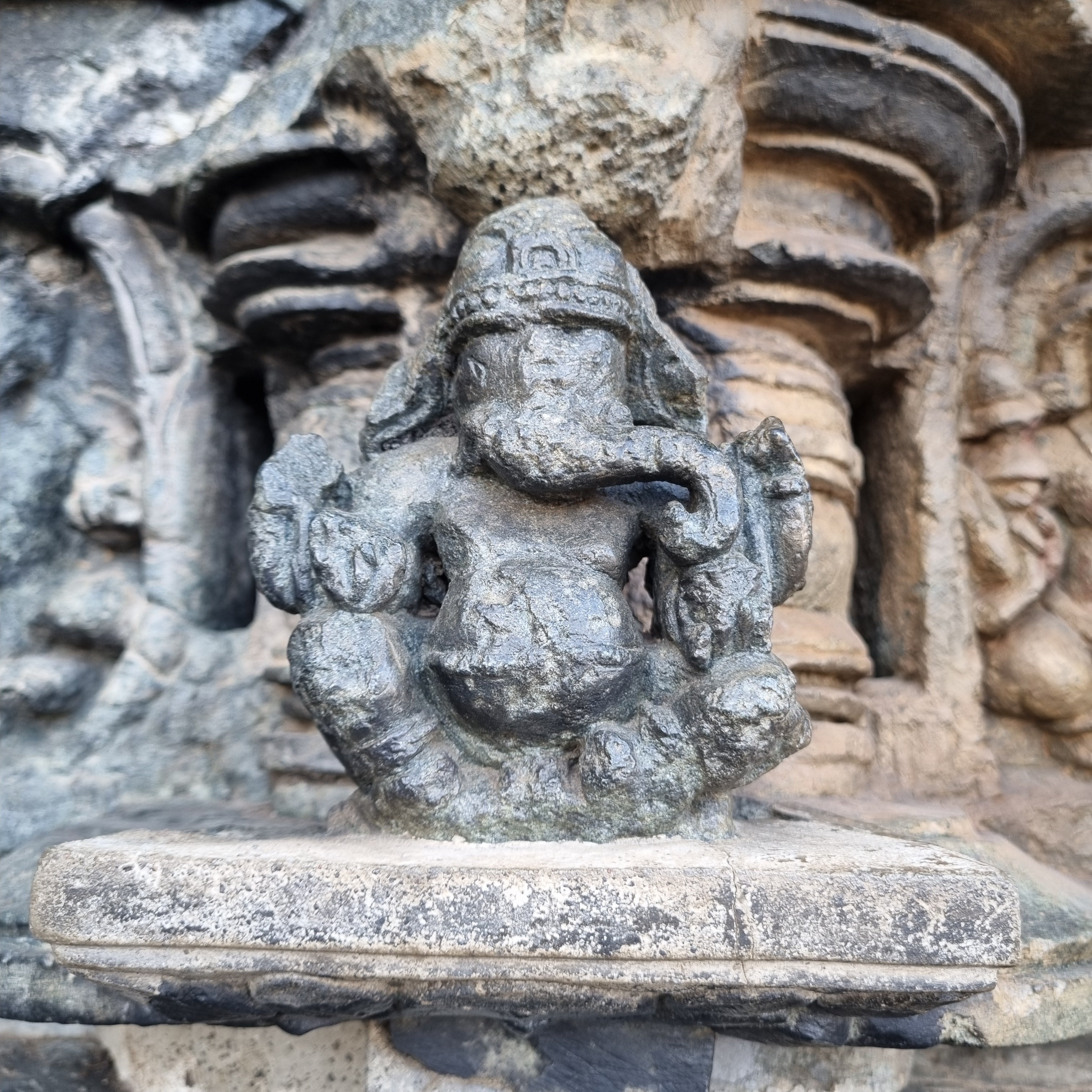
This sculpture was in sharp contrast to the others – it seems unfinished (or perhaps chipped?). It has little or no ornamentation.
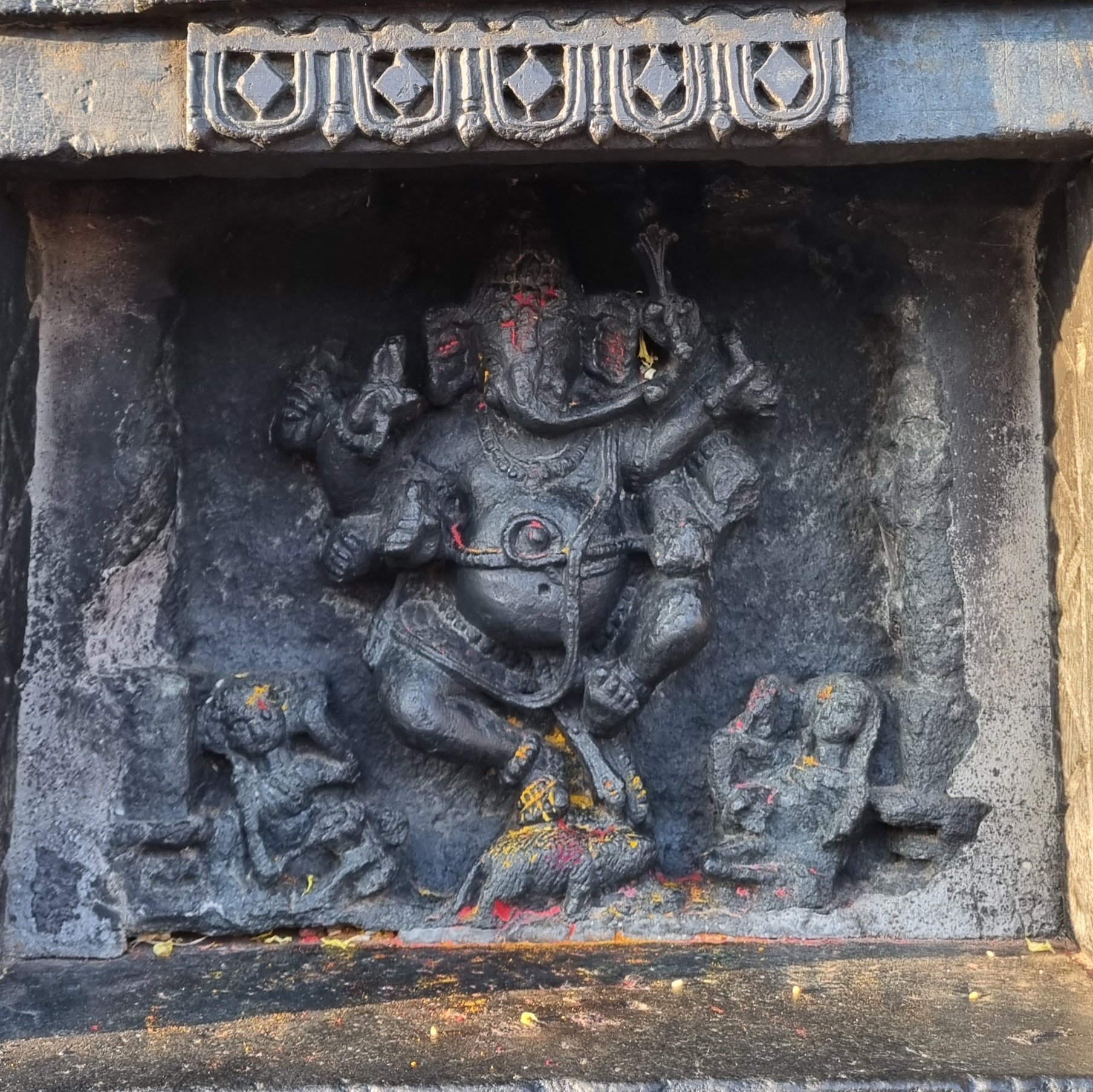
Note the mouse under Ganesh’s feet – it appears to be having a hard time standing under the weight on him.
Scenes of War & Destruction
Wars are hugely significant in Indian mythology and provide symbolism through which many valuable teachings are exemplified. Because of their importance, a lot of Indian art depicts war scenes.
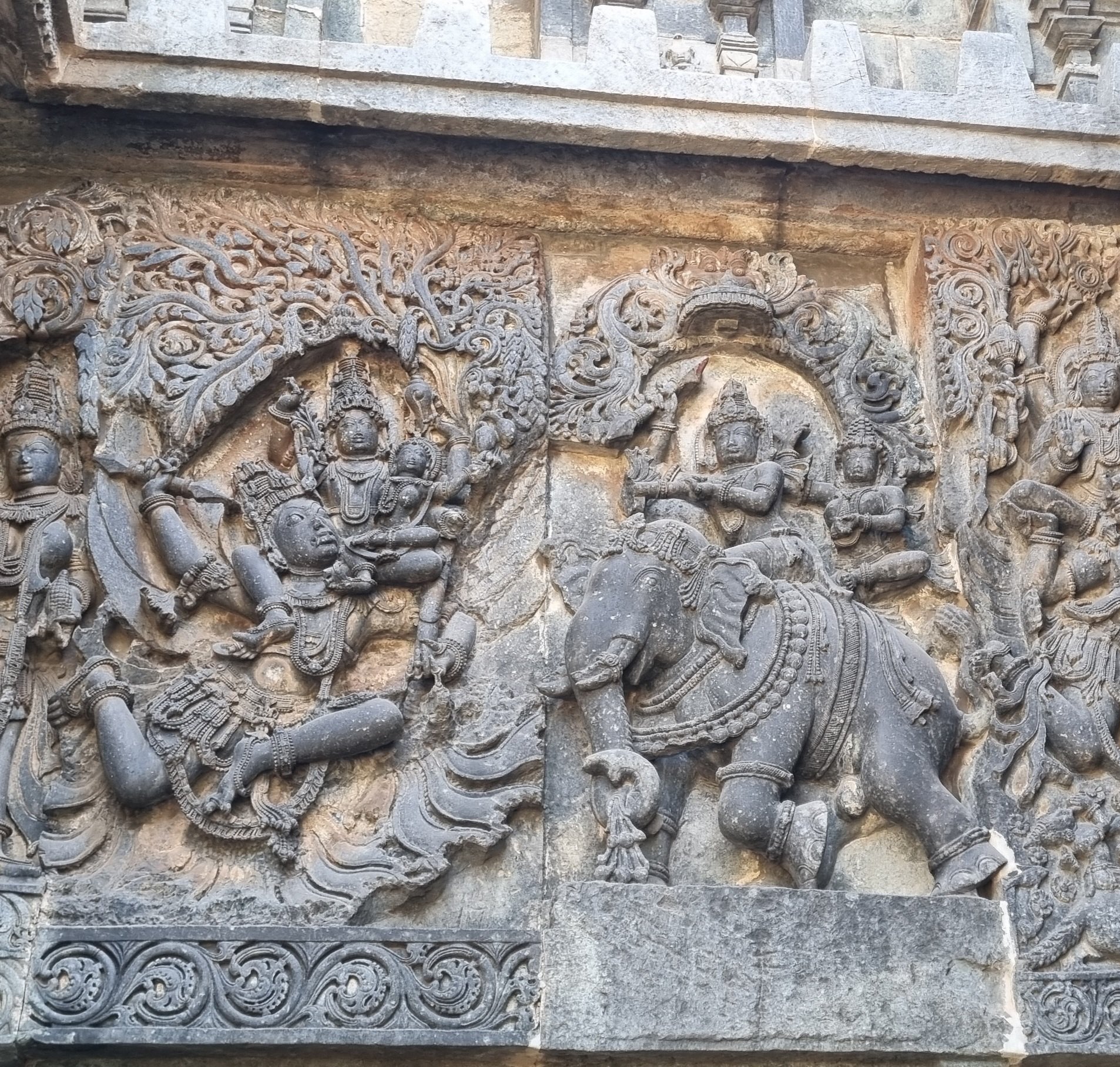
Indra and Vishnu at war. Indra rides Airavat – his white elephant. Vishnu rides Garuda.
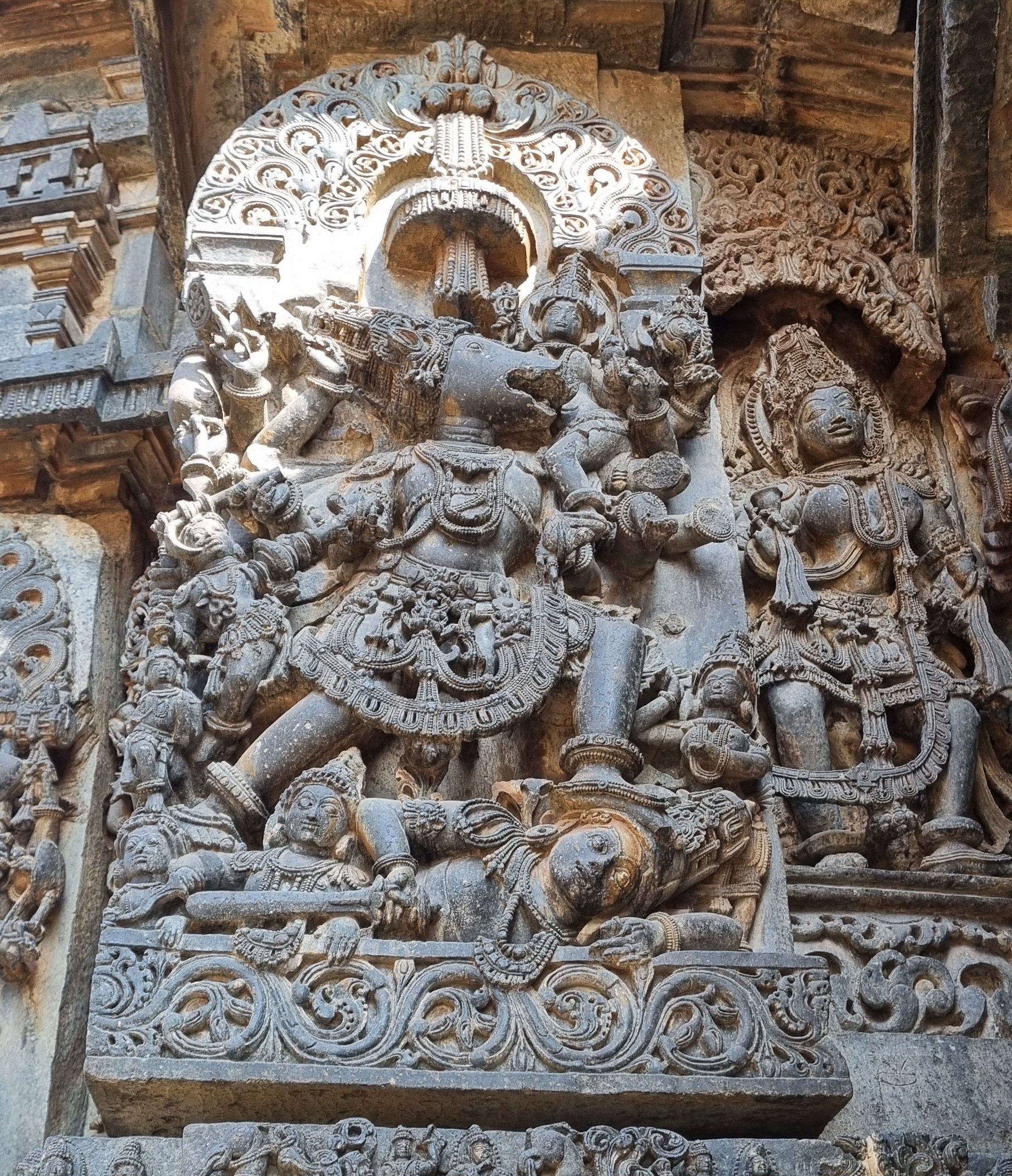
Vishnu in his 10th incarnation as Varaha (boar). Note the figures he’s trampling on – his stance is Virbhadra stance. His face shows the fierceness of an angry boar.
Sculptures of the Female
The difference between the male and female sculptures is always interesting. Apart from the full breasts, the female sculptures seem to have more graceful lines and fluid motions.
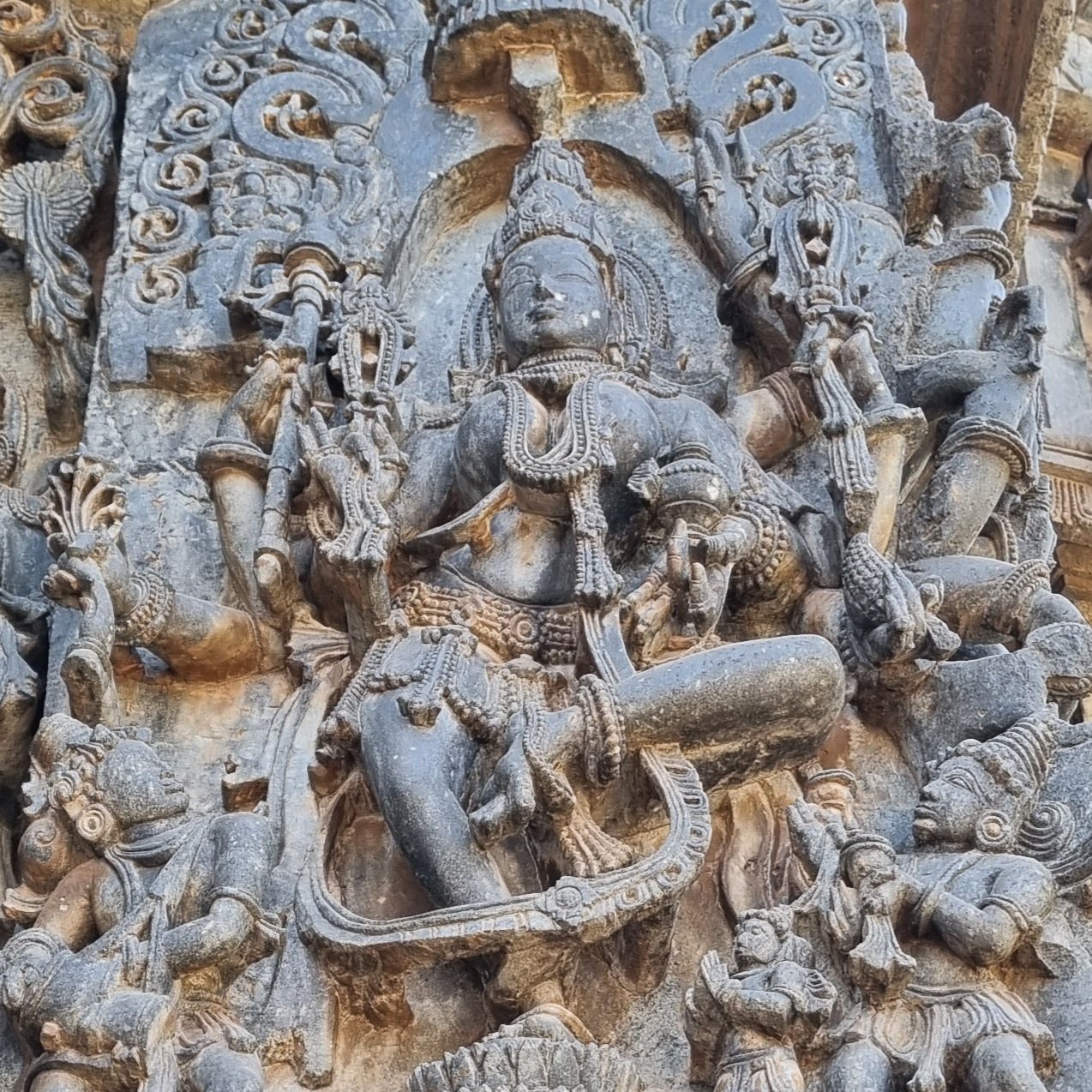
Fluidity in stone.
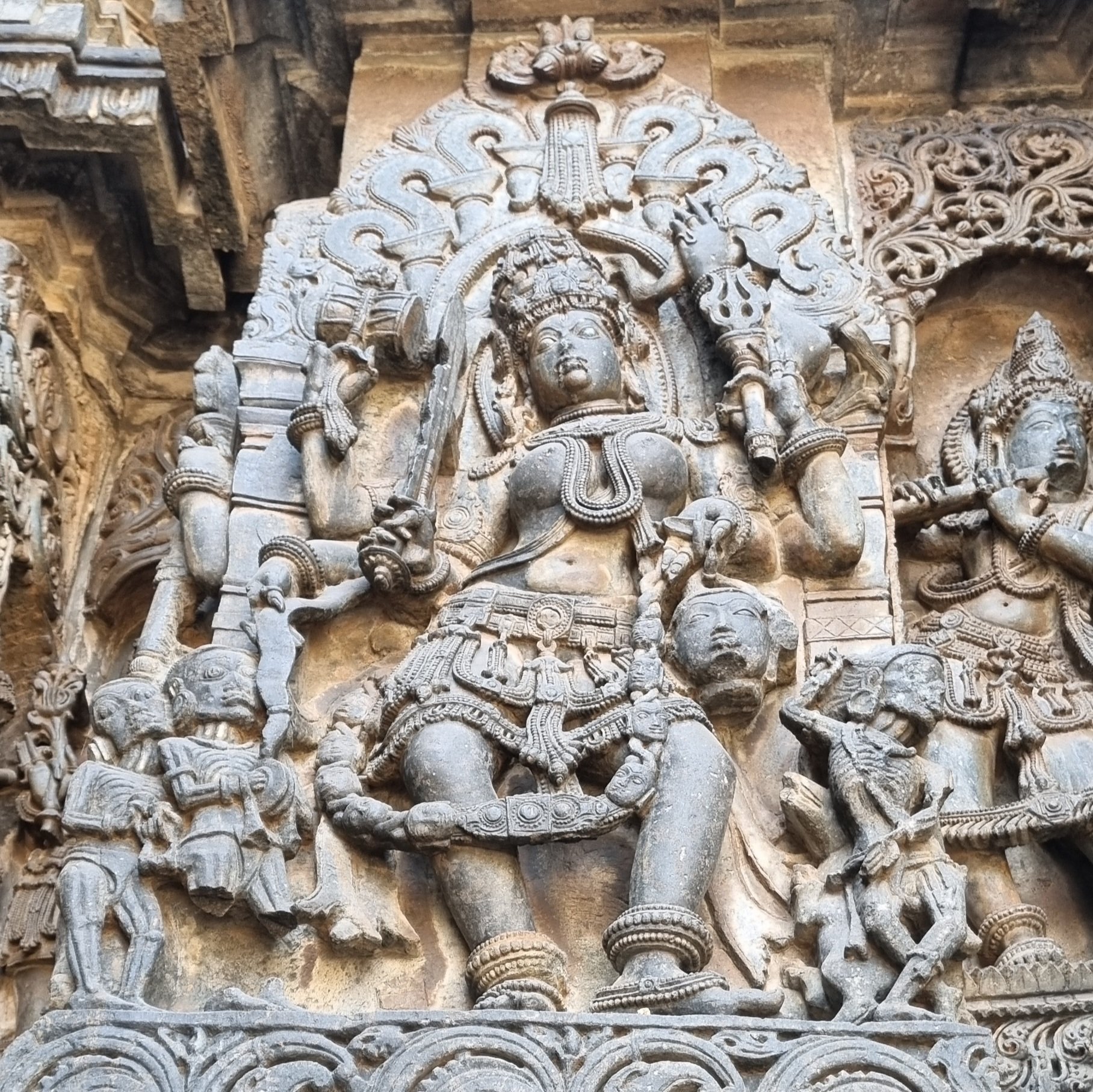
Kali – the icon I find most intriguing. Note the skull necklace and the severed head in her left hand. Look closely and you can see blood dripping from the sides of her mouth. Her helpers are emaciated with their bones visible – a contrast to her full, voluptuous figure. She is the dark avatar of the Divine Feminine.
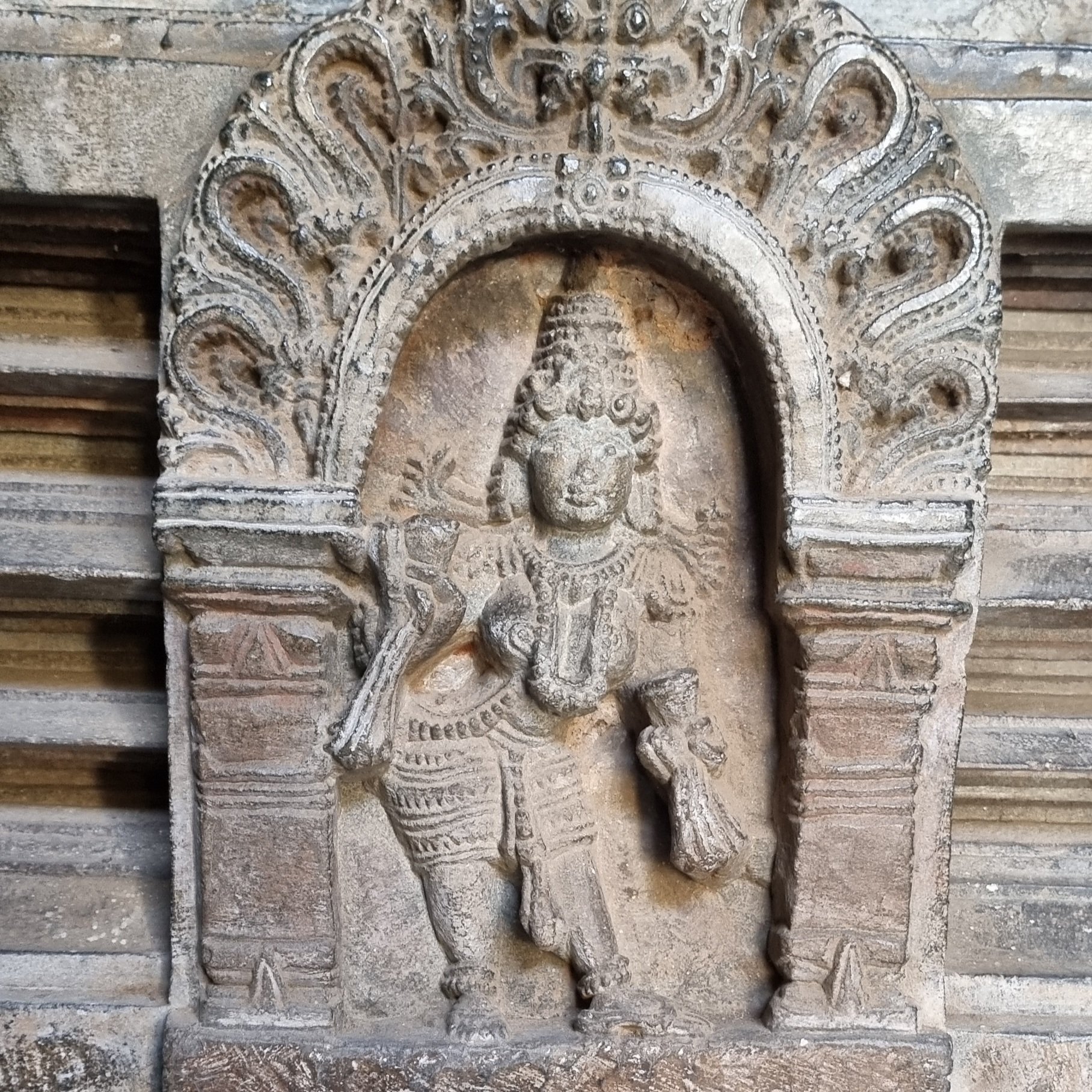
This might be Andal. She is depicted as one of Vishnu’s three wives and is called Ranganayaki. Here’s a carving of Andal I saw in the Perur Pateeshwara in Coimbatore. As a manifestation of the Divine Feminine, she is a Bhakti Yogi.
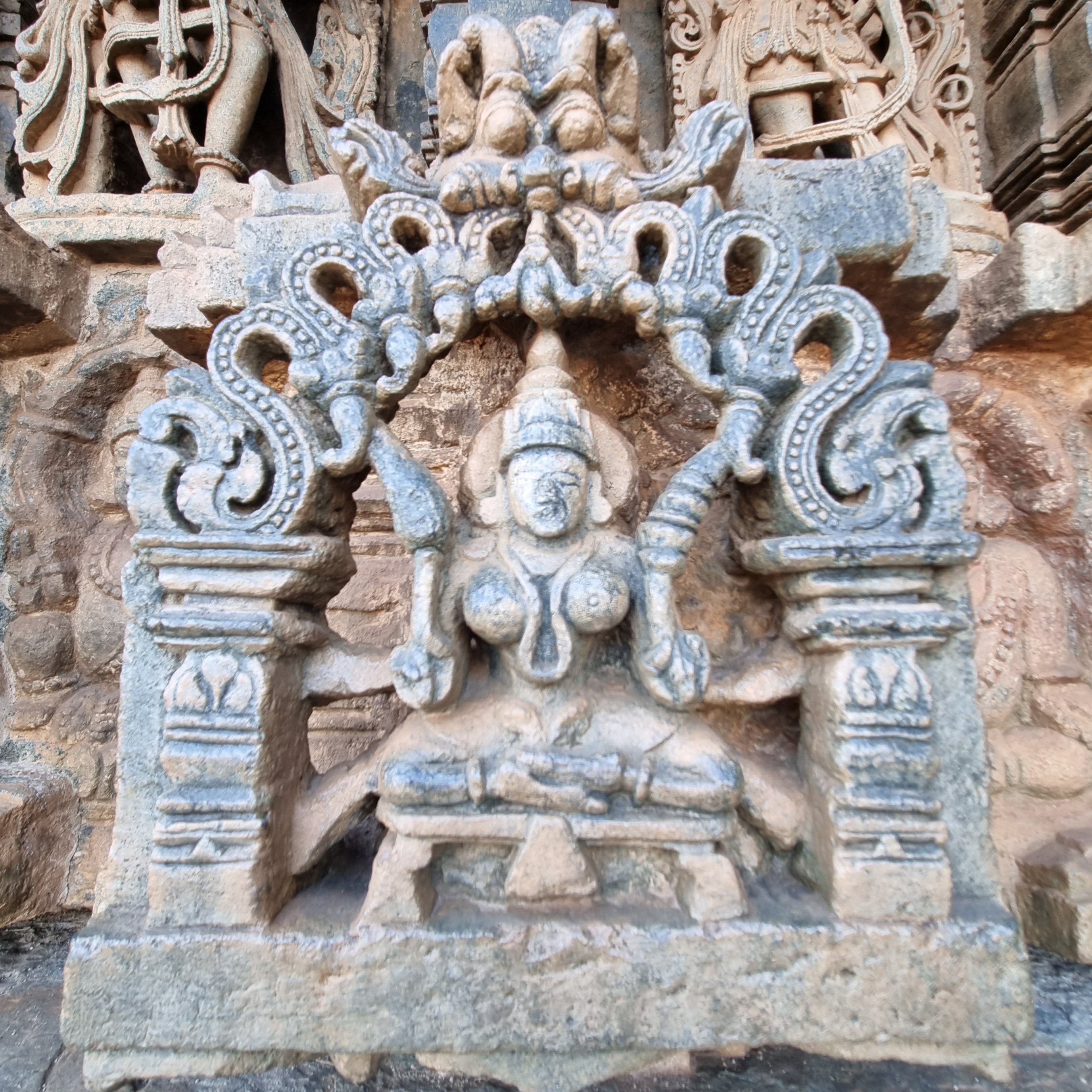
A female figure in siddhasana – the austerity of the carving (no elaborate ornamentation) making me think that perhaps this was a female sage or teacher. As a manifestation of the Divine Feminine she would be a jnana yogi.
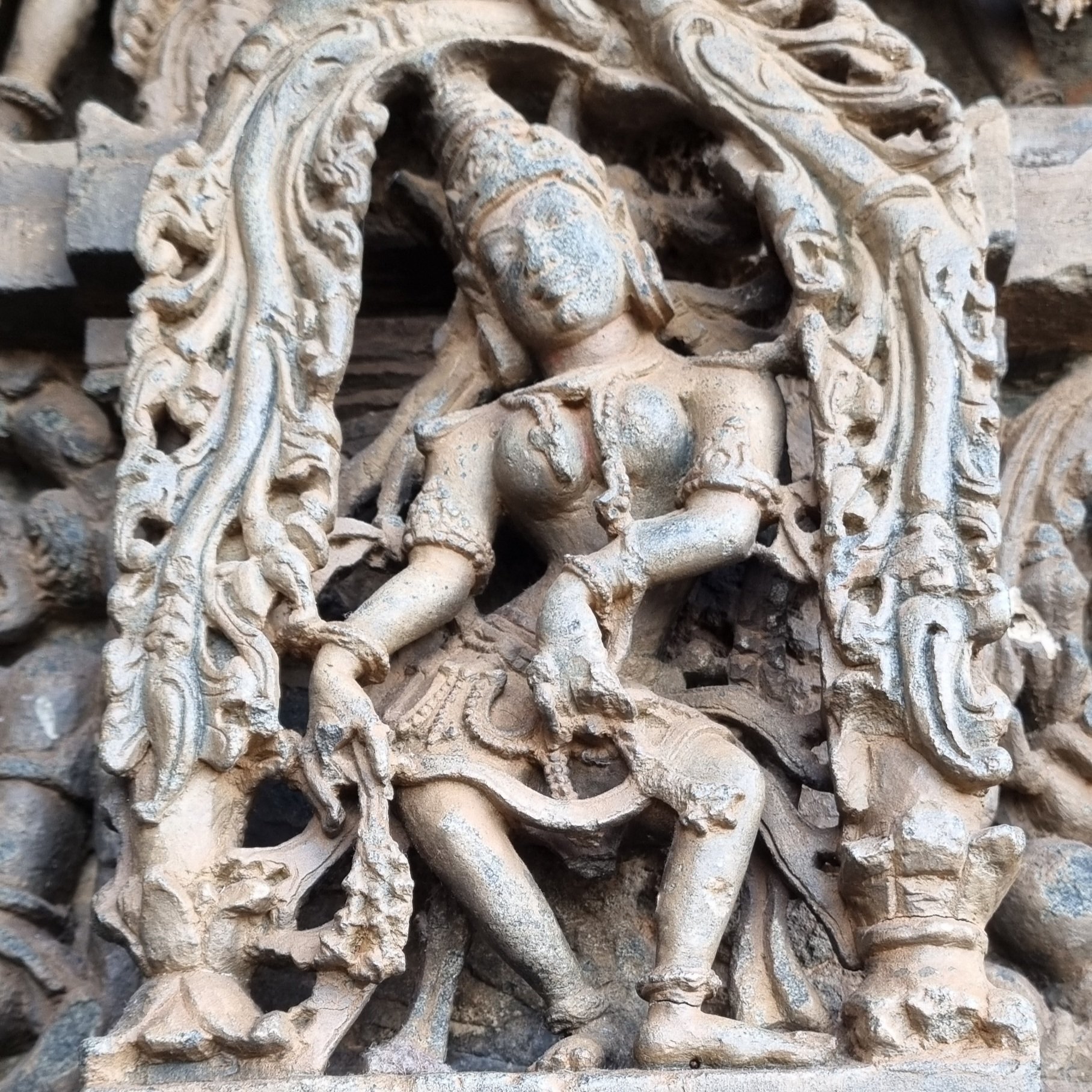
A dancer in tribhanga position – the line of beauty clearly depicted by the sculptor.
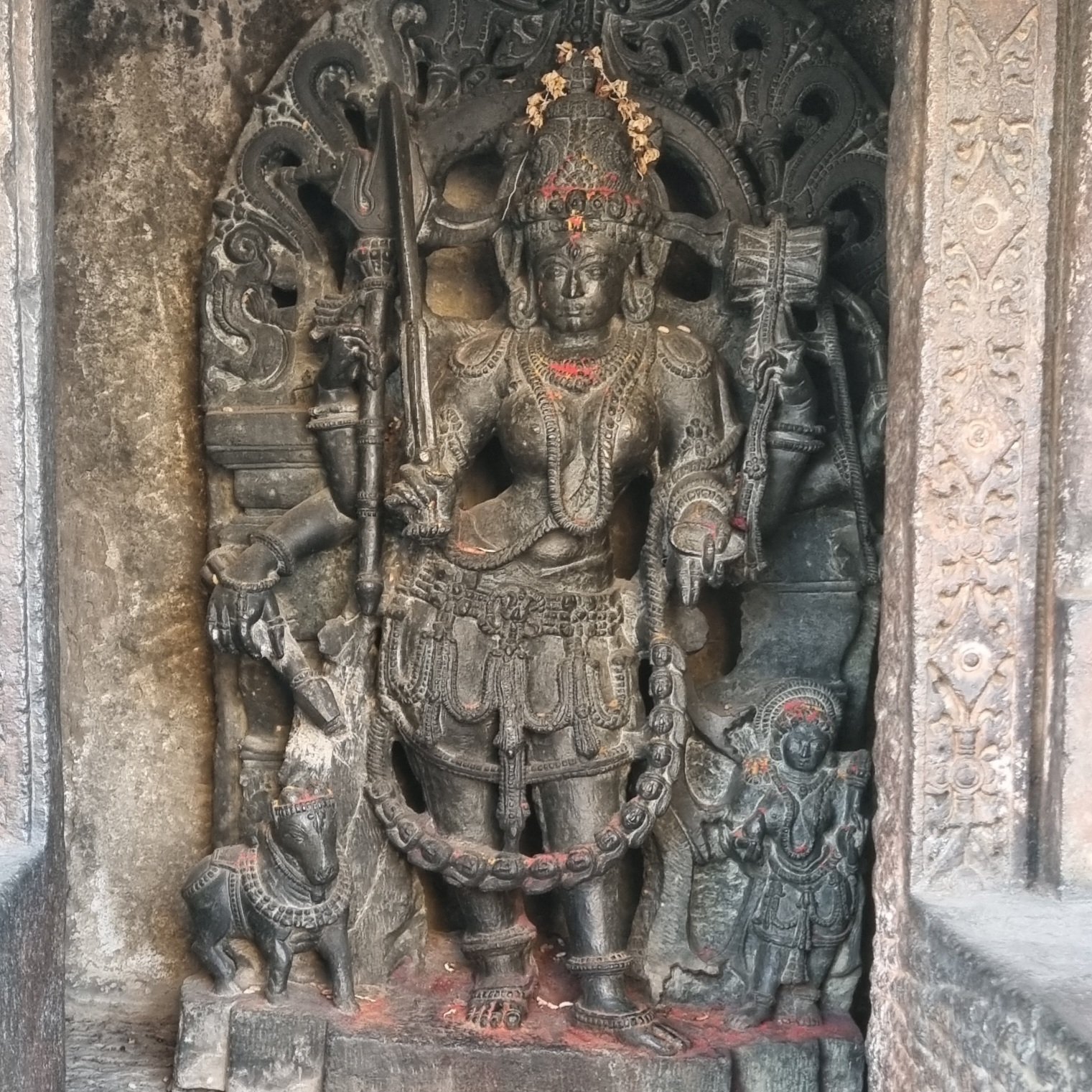
A female deity, perhaps Mohini. However, she has a damru in one hand and a Nandi at her feet, which are markings of Shiva.
Boarding and Lodging
I can’t recommend the Hotel Mayura Velapuri Belur (A KSTDC) hotel enough. It’s the best hotel in the area. It’s clean, within walking distance of the temple, the staff is great and they have a restaurant which serves good food.
